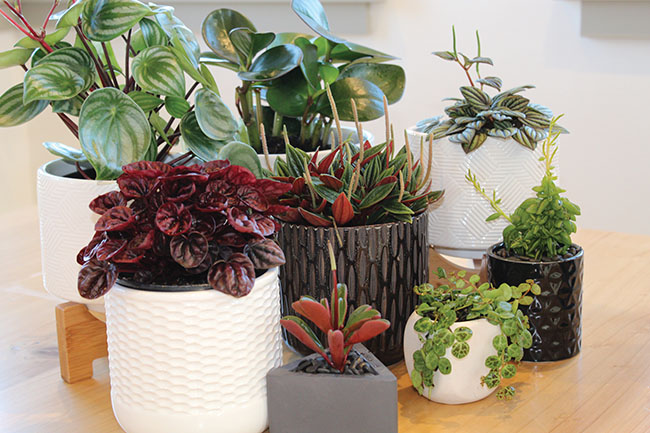
2022: Year of the Peperomia
Each year, the National Garden Bureau designates specific crops to honor and promote at all levels of the industry. As part of its “Year of” program, the organization selects one annual, perennial, shrub, edible and bulb crop and offers downloadable literature, presentations and graphics that industry members can share.
In 2022, NGB is adding a new category: houseplants! And the focus crop for this first year will be peperomia, which is a unique foliage crop available in various colors and textures. To learn more about this crop category, I reached out to some industry experts to gain insight into peperomia development and production.
Joining me in this conversation are: Diane Blazek, executive director of the National Garden Bureau; Maria Zampini, president of UpShoot, which works with Little Prince of Oregon; and Andrew Britten, product development manager for ForemostCo.
L&GR: We are big supporters of the NGB’s ‘Year of’ program, and we look forward to finding out which crops are selected each year. New for 2022 is the houseplant category. Can you tell me why the decision was made to include houseplants in the program?

Diane Blazek: Houseplants are certainly on trend right now; one glance at social media will tell you that. As an industry, many of us realize that we “dipped our toes” into horticulture by helping our parents garden and/or by tending houseplants in our youth. The National Garden Bureau Board of Directors decided that adding a houseplant category would not only broaden our reach to a new audience, but that audience might just grow into full-fledged gardeners of annuals, perennials, vegetables, etc. So yes, we thought the category was needed since NGB is a non-profit organization with a goal of inspiring everyone to do more gardening or plant-parenting … whatever you choose to call it!
L&GR: Maria and Andrew, are you familiar with the NGB ‘Year of’ program? Why do you feel houseplants were added; was the category needed?
Maria Zampini: Yes! A million times yes, houseplants were needed as a “Year of” category. Houseplants are and have been the “it” plant among consumers, especially with that younger gardening demographic. We’re always saying we need to connect with the next generation, so this makes perfect sense.

Andrew Britten: I am familiar with the program, and we do evaluate what plants are selected and adjust our production to compensate for this. This will become even more important to us now that houseplants have been added to the program.
I think the bigger question is why they hadn’t been included until now! Houseplants are a mainstay in the industry and should have been featured here for a long time; now it is finally their turn to get some of the spotlight. Many gardeners start with houseplants before moving into the other plant categories.
L&GR: With this new designation in the program, 2022 will be Year of the Peperomia. In your opinion, why was this crop selected?
Diane: It was kind of hard to decide which of the many houseplants we would promote in our first year with this new category. We wanted one with variety yet not too over-exposed. So we narrowed our choices down to about five classes, then took a vote and peperomia came out on top. As with all of our “Year of” crops, we wanted one that was easy to care for, has a diverse number of varieties and has universal appeal.
Maria: I think NGB wanted to ensure their houseplant selection was one consumers can be successful with. Peperomia are easy to grow but also include a wide range of varieties. Mark Leichty of Little Prince of Oregon told me some peperomia are considered a succulent and for many plant parents, succulents are extremely desirable. I mean, if you’re on Instagram then you know all about #SucculentSaturday (and if you don’t, you should as it trends each week).
Andrew: Peperomia are durable, with many variations of size and color. They make a great starter plant for new plant enthusiasts as well as variety for the collectors.
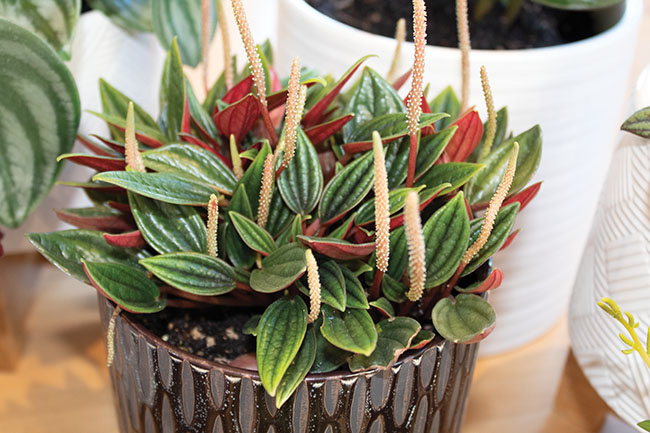
L&GR: What are your personal favorite attributes of peperomia? What makes it special?
Diane: The many, many looks and types of peperomia! I was semi-familiar with this plant before but as we are digging into it more and gathering information for our website, I am amazed at how many different varieties there are.
Maria: I reached out to my friend (and personal houseplant doctor) Lisa Steinkopf, aka The Houseplant Guru, to ask her opinion and she said that peperomia are a small plant that stays a good size for plant parents living in smaller quarters. She also said they have such a range of leaf colors and textures — from wrinkled to fuzzy to striped. Like Mark, she mentioned there are succulent types that take lower light, levels not requiring the high sunlight some of us may not have and most succulents need. I think she makes a good point here because I think no matter your area of expertise, you’re always looking for low light choices.
L&GR: Do you have any favorite varieties of peperomia?
Andrew: I am particularly fond of the selections of Peperomia obtusifolia. These have nice wide leaves, with differing variegated coloration. They grow well without having a stretched appearance.
Maria: So far, I’m a basic kind of peperomia gal so luckily both Mark and Lisa were eager to share their favorite peperomias with me. So now I have my “must have” shopping list of peperomias! Because 80+ plants in my condo isn’t enough. Houseplants are like Lay’s potato chips; you can’t have just one.

such as Peperomia
obtusifolia, add texture
and an interesting
element to houseplants.
ForemostCo.
Lisa loves the P. obtusifolia variegate but also the non-variegated, which can grow in lower light level than most succulents. She received a P. tetraphylla ‘Hope’ at a trade show, and she said it was offered inconsistent care and has weathered it beautifully. I say, sign me up for any houseplant that takes a licking and keeps on ticking.
Mark recommends P. prostrate ‘String of Turtles’ for its trailing habit and patterned leave. He says P. argyreia or Watermelon peperomia has beautiful striping on fleshy leaves.
L&GR: Have you seen any changes or innovations in peperomia in recent years?
Andrew: The main change I have seen is the growing demand for them. Because of this demand, we have slowly added new varieties to the mix over the past 11 years. As the demand has increased, so has the desire for more unique and colorful varieties.
Maria: It is my understanding that breeding work is on the horizon trying to achieve more colors, forms, and more prominent variegation and variegation colors.
L&GR: How do you think growers and retailers can capitalize on the peperomia category?
Andrew: Promoting the fact that they are houseplant of the year, along with displaying the wide variety of options will increase sales in this category.
Maria: Peperomia are easy — easy to produce wholesale and easy and successful for the homeowner. There are a wide range of shapes and sizes and there are choices for every light level.

Diane: By planning ahead and starting now with production planning, order extra plants, plan events, then use our materials to let customers and consumers know about this program. Sometimes, all you need to do is bring it up and that’s enough reason for someone to purchase them. All the material on the NGB website is free to use so make it easy on yourself and add this to your marketing program.
L&GR: Does the production or sale of peperomia present any challenges for growers or retailers?
Andrew: The recent surge in demand has put a strain on availability. Stock producers are ramping up to fulfill this demand.
Maria: In talking with Mark, he feels the biggest challenge may be overproduction of the crop. Because it is easy to grow it could become a commodity, driving down the price and making it unprofitable to produce. He feels some of the very largest nurseries who sell primarily to big box stores have mass produced this and hundreds of other plants to the point that it becomes commercially unattractive for others to grow and sell the plants.
For retailers, I think they need to be sure they have great signage that includes facts and benefits. Don’t rely on generic ‘foliage’ or ‘succulent’ tags. Group plants by their name, give them specific facts to the plant or plant group but then more importantly match the consumers’ needs to what you are offering; i.e., your signage should scream ‘low light lover’ or ‘I may not look it but I’m a succulent’ as examples.
L&GR: Why do you think peperomia is especially appealing at the consumer level?
Andrew: The variability in appearance and the durability have made peperomia a great category to own!
Diane: Because of the decorative value they bring to the home. There are many different leaf shapes, different color patterns and different sizes to fit every need. And for a collector, there are so many different styles to create quite a collection.
Maria: 1. Easy to grow; 2. Some can be billed as succulents; 3. There are selections for both high and low light situations; 4. Relatively pest and insect free.
Houseplants and succulents are winner, winner, chicken dinner with consumers, and the National Garden Bureau “Year of Peperomia” in 2022 can only help drive sales of this and other houseplants. Let’s feed the houseplant frenzy with peperomia!


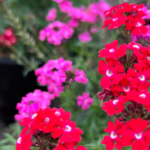


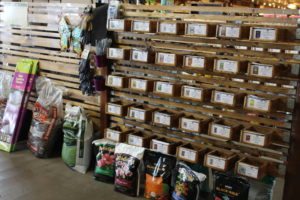
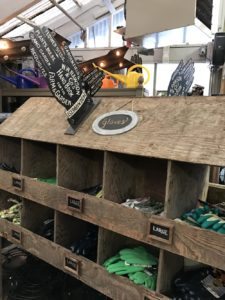

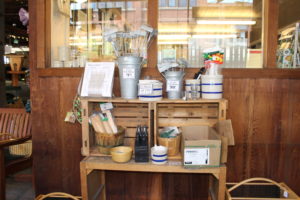

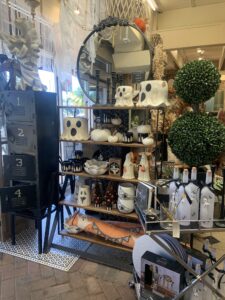


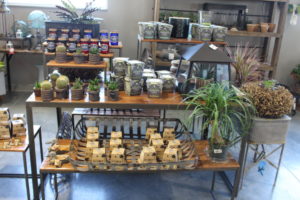

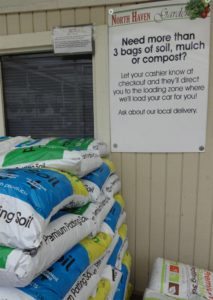
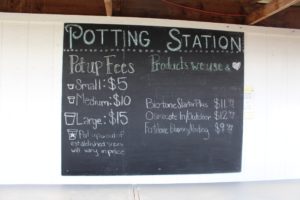
 Videos
Videos





